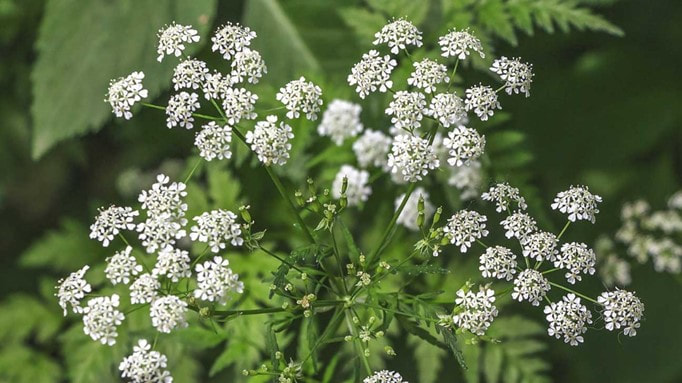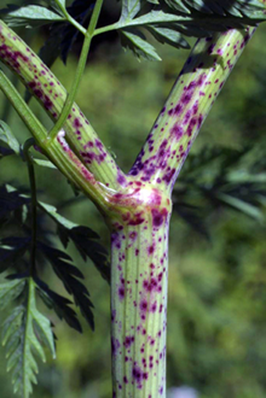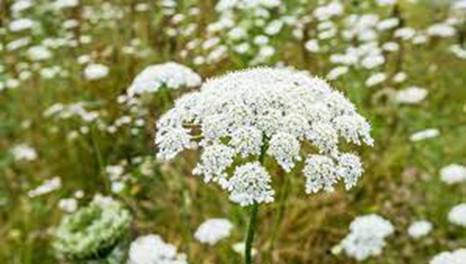EducationEducation is a large part of what we do! If you have a group (adults or children) who would like to hear more on a conservation subject contact us to set up a date and time! The following page highlights a conservation or nature related topic we feel needs to shared!
|
Is it Poison Hemlock or Queen Anne's Lace?
Poison Hemlock and Queen Anne’s Lace look very similar and often get mistaken for one another. Being able to tell the difference is very important.
Poison Hemlock (Conium maculatum) can be found across most of the United States and is one of the deadliest plants in North America. It is toxic to pets and livestock and can be fatal if ingested. All parts of poison hemlock are highly toxic to humans, and just touching it or brushing up against it can cause severe injury. Poison Hemlock grows in dense patches along trails, roads, and the edges of fields and streams. Poison hemlock blooms from late spring to early summer. It grows to a mature height of almost 10 feet.
The stem of poison hemlock is hollow and smooth with purple blotches and is much thicker than the stem of Queen Anne’s Lace.
Poison Hemlock (Conium maculatum) can be found across most of the United States and is one of the deadliest plants in North America. It is toxic to pets and livestock and can be fatal if ingested. All parts of poison hemlock are highly toxic to humans, and just touching it or brushing up against it can cause severe injury. Poison Hemlock grows in dense patches along trails, roads, and the edges of fields and streams. Poison hemlock blooms from late spring to early summer. It grows to a mature height of almost 10 feet.
The stem of poison hemlock is hollow and smooth with purple blotches and is much thicker than the stem of Queen Anne’s Lace.
Queen Anne's lace (Daucus carota) is a wild edible (the root) and typically grows in the exact same locations as poison hemlock.
Queen Anne’s lace starts blooming in the summer and continues into the fall, sometimes up until the first frost. The stem of Queen Anne’s lace is ribbed and hairy and grows to a mature height of 2 to 3 feet.
When trying to identify whether the plant in your yard is poison hemlock or Queen Anne’s lace, proceed with caution and never touch it without proper protective gear.
How to Get Rid of Poison Hemlock
If you have positively identified poison hemlock, you should remove it quickly. The method depends on the age of the plant and the level of infestation. You can usually pull small first-year seedlings by hand (with gloves), ideally after a good rain when the soil is soft so you can lift the plant with its entire tap root. Dispose of pulled plants in the garbage, not in the compost. The seeds can spread from there and composting does not get rid of the toxins. Larger individual plants require removal with a shovel. When dealing with a heavy infestation, start by mowing it repeatedly in the early summer before the plant has set seeds. The last resort after manual removal is to use a broad-spectrum herbicide in the first year of the plant’s life cycle. Because heavy infestations go hand in hand with a considerable seed bank in the soil (and poison hemlock seeds remain viable for up to six years), one herbicide application is likely not sufficient to get rid of it. Do not burn plants to prevent any accidental inhalation.
If you have further questions about identification or removal, feel free to stop in our office and talk with our partners with the Naturals Resources Conservation Service.




